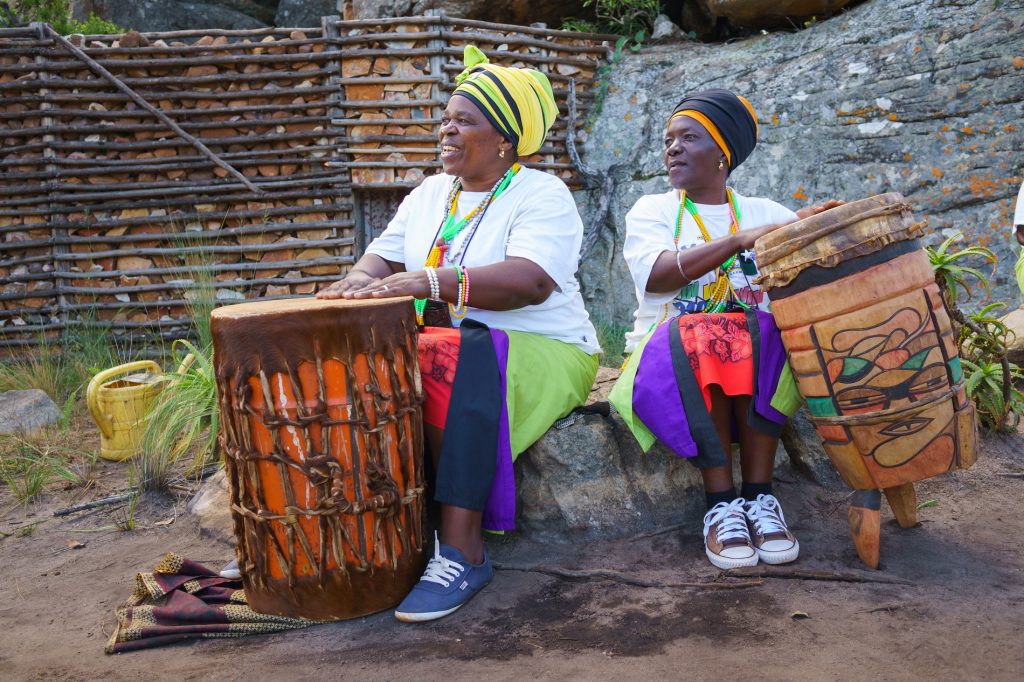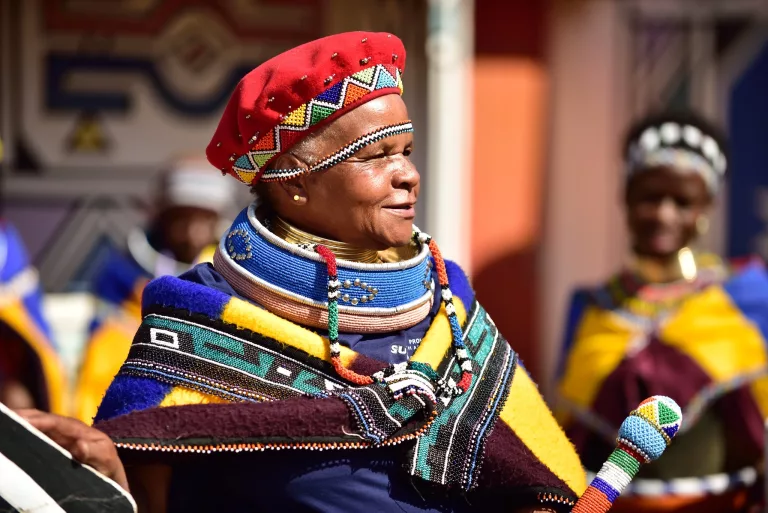What Does South African Culture Today Mean?
Table of ContentsThe Basic Principles Of South African Culture Today The smart Trick of South African Culture Today That Nobody is Talking AboutAll about South African Culture TodaySouth African Culture Today Can Be Fun For AnyoneThe 8-Second Trick For South African Culture TodaySouth African Culture Today Can Be Fun For Everyone
A matter of relevance in Zambian villages is the passing away of loved ones. All participants of the town placed money, time and effort together for the funeral of the deceased.Throughout the mourning period; guys remain outside the home and the ladies stay inside the house of the deceased. After speaking about the deceased, the village strolls to the location of funeral to state their last bye-byes. Songs and dance is a very essential element of the Zambian society. The various tribal units have their own dance forms; nevertheless, makishi prevails among all people.
Not known Factual Statements About South African Culture Today
When it comes to songs, drums are utilized the most, with a range of drumming events. In Zambia, majority of individuals are Christian; Protestant and Roman Catholic. There are tiny groups of Muslims and Hindus, with the rest complying with neighborhood native tribal beliefs.

South African heritage and culture is immensely diverse, and is composed of several various teams of individuals who each have their very own practices and ideas. Having such a variety of individuals and societies is what makes South Africa so distinct. In truth feeling of the expression, we are a rainbow country.
Making it the 7th on the checklist of nations with the most Portuguese people in it outside of Portugal. Portuguese is not just a culture, but it is also a language and a race. Portuguese individuals stem from the nation of Portugal in Europe, nevertheless, due to Portugal (like numerous other nations in Europe) discovering the globe and overcoming various other countries throughout the 15th 20th centuries, South Africa has what we call Portuguese South African's living in it.
The Buzz on South African Culture Today
Among the prominent attributes of the topography is a plateau that covers practically 2 thirds of the center of the nation. The plateau complicated rises towards the southeast, where it climaxes in the Drakensberg variety, component of an escarpment that divides the plateau from the coastal locations. The Drakensburg includes Sparkling wine Castle, the highest possible top in the nation.
The region north of the Witwatersrand, called the bushveld, inclines downward from eastern to west toward the Limpopo River, which creates the worldwide boundary. The western section of the plateau, the middleveld, likewise comes down in the direction of the west and differs in elevation between the highveld and bushveld. In between the Drakensburg and the eastern and southerly coastline, the land descends to the sea.
Nearer the coastline there is a low-lying plain called the eastern lowveld. Southwest of the plateau the country comes to be progressively extra dry, paving the way to the hostile desert of the Great Karroo, verged on the east by the lower, much better sprinkled plateau of the Little Karroo. Separating the completely dry southerly interior from the sandy littoral of the southerly shore and West Cape is another variety, the Langeberg.
South African Culture Today - The Facts
The nation's racially, ethnically, and politically split history has produced national and subnational icons that still work as signs of the country, and others symbols that are accepted only by certain groups. The monuments to white inhabitant occupation and political prominence, such as the Afrikaner Voortrekker ("leader") Monolith in Pretoria and the Rhodes Monolith recognizing the British colonial empire home builder and Cape prime priest Cecil Rhodes, stay sectarian signs.
The very first contemporary residents were the San ("bushman") hunter-gatherers and the Khoi ("Hottentot") peoples, who rounded up animals (South African culture today). The San may have been present for thousands of years and left proof of their presence in thousands of old cave paintings ("rock art"). Bantu-speaking clans that were the forefathers of the Nguni (today's amaZulu, amaXhosa, amaSwazi, and vaTsonga individuals) and Tswana-Sotho language teams (today's Batswana and Southern and hop over to these guys Northern Basotho) moved down from eastern Africa as very early as the fifteenth century

Both former republics of the Orange Free State and Transvaal (South African Republic) were developed by Afrikaner settlers that beat and dispossessed the Basotho and Batswana. Lesotho would have been by force integrated right into the Orange Free State without the extension of British security in 1869. The best marriage of the country resulted from the South African War (18991902) in between the British and the 2 Afrikaner republics, which decreased the nation to mess up at the start of the twentieth century.
Afrikaners historically considered themselves the only true South Africans and, while granting full citizenship to all citizens of European descent, refuted that status to people of shade up until the autonomous transition of 1994. British South Africans keep a feeling of social and social connection to Great Britain without deteriorating their identification as South Africans.
South African Culture Today Things To Know Before You Buy
The variety and fragmentation within ethnic collections and the equilibrium of tensions between those groups during the twentieth century protected against interethnic civil problem. While intergroup stress over sources, entitlements, and political supremacy continue to be, those conflicts are as likely to pit Zulu versus Zulu as Zulu versus Xhosa or African against Afrikaner.
From colonial India, British vendors and managers brought the rounded metal ornamental roofs and slim shoelace job pillars that still typify the terraces of homes in communities and cities throughout the nation. Houses of worship add an important architectural facet even in the smallest communities. Along with the soaring steeples and visit here timeless stonework of Afrikaans Dutch Reformed churches, Anglican churches, synagogues, mosques, and Hindu temples offer variety to the spiritual building scene.

Slaughtering and the developing of standard cereal beer are vital in securing the engagement and goodwill of the ancestors that are considered the guardians of good luck, success, and health. Indian communities preserve their indigenous culinary practices and use them on Islamic and Hindu ritual and ceremonial events. Afrikaners and Coloured individuals gather at weekends and unique celebrations at multifamily barbecues called braais, where community bonds are enhanced.
Because this was the main financial venture of both black Africans and white homesteaders, conflict between those teams fixated the property of grazing land and animals. In 1867, the largest diamond deposits on the planet were uncovered at Kimberley in the west central area. The wealth from those fields assisted fund the exploitation of the greatest gold reef worldwide, which was discovered on the Witwatersrand in 1886.
Some Known Questions About South African Culture Today.
This led to misunderstandings and purposeful misrepresentation in the dealings of white inhabitants and federal government authorities with African principals throughout the colonial period (South African culture today). In the facility of African books, some elements of common and chiefly "tribal count on" land tenure were maintained, and even in white country locations, learn the facts here now kinds of public period were still practiced in locations with African areas
After the autonomous change of 1994, programs for land restitution, redistribution, and reform were instituted, yet development has actually been sluggish. The white minority still controls eighty percent of the land. Following agricultural land invasions in Zimbabwe, the Division of Land Affairs has actually vowed to speed land redistribution.
Comments on “5 Simple Techniques For South African Culture Today”